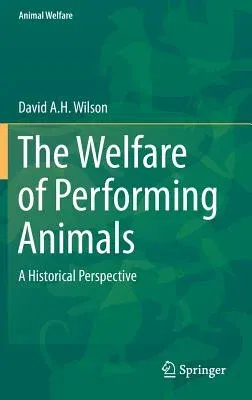David A H Wilson
(Author)The Welfare of Performing Animals: A Historical Perspective (2015)Hardcover - 2015, 20 March 2015

Qty
1
Turbo
Ships in 2 - 3 days
In Stock
Free Delivery
Cash on Delivery
15 Days
Free Returns
Secure Checkout

Part of Series
Animal Welfare
Print Length
278 pages
Language
English
Publisher
Springer
Date Published
20 Mar 2015
ISBN-10
3662458330
ISBN-13
9783662458334
Description
Product Details
Author:
Book Edition:
2015
Book Format:
Hardcover
Country of Origin:
NL
Date Published:
20 March 2015
Dimensions:
23.39 x
15.6 x
1.75 cm
Genre:
Science/Technology Aspects
ISBN-10:
3662458330
ISBN-13:
9783662458334
Language:
English
Location:
Berlin, Heidelberg
Pages:
278
Publisher:
Series:
Weight:
589.67 gm